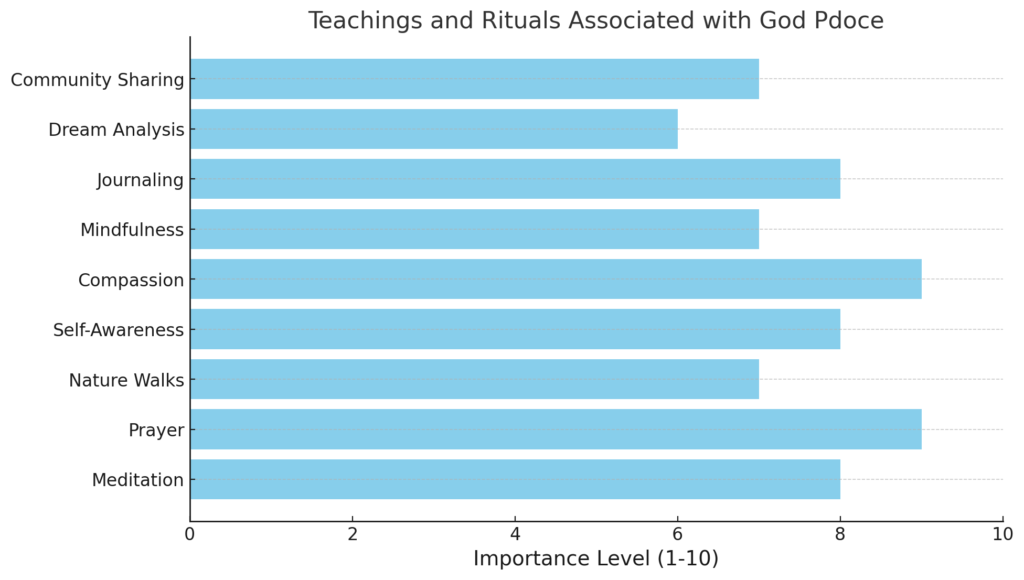Gods and Goddesses
Join us on this journey through the divine, where the stories of gods and goddesses illuminate the paths of spirituality and the essence of human existence. Whether you seek knowledge for personal growth, inspiration for rituals, or simply a deeper appreciation of mythology, this category offers a treasure trove of wisdom and insight.

Gods and Goddesses
In the realm of mythology and spirituality, the concepts of gods and goddesses hold profound significance, representing the various aspects of existence, nature, and the human experience. This category delves into the rich tapestry of deities from diverse cultures around the world, exploring their origins, attributes, and the vital roles they play in the stories and traditions of humanity.
Gods and goddesses are often seen as embodiment’s of natural forces and human ideals, from the nurturing aspects of fertility and love to the fierce powers of war and justice. Each deity carries unique symbolism and significance, reflecting the values and beliefs of the cultures they originate from. Through myths, legends, and rituals, these divine figures guide, protect, and inspire their followers, offering insights into the mysteries of life and the universe.
In this category, you will find:
- Profiles of Major Deities: Detailed explorations of well-known gods and goddesses, including their myths, worship practices, and cultural significance.
- Symbolism and Attributes: An examination of the symbols and characteristics associated with various deities, providing deeper understanding of their roles in mythology.
- Rituals and Worship: Insights into the rituals, ceremonies, and practices that honor these divine figures, illustrating how they continue to influence modern spirituality.
- Cultural Comparisons: A look at the similarities and differences among gods and goddesses across different cultures, highlighting the universal themes that connect human experiences.

Exploring specific deities offers a fascinating glimpse into the beliefs and values of different cultures throughout history. Here are some notable gods and goddesses from various mythologies, along with their key attributes and stories:
1. Zeus (Greek Mythology)
- Domain: King of the gods, sky, thunder, and lightning.
- Attributes: Often depicted with a lightning bolt, Zeus embodies authority and power. He is the ruler of Mount Olympus and oversees the affairs of both gods and humans.
- Myth: Zeus is known for his numerous adventures and romantic escapades, often transforming into different forms to seduce mortals. His most famous myths include the Titanomachy, where he led the gods in a rebellion against the Titans.
2. Isis (Egyptian Mythology)
- Domain: Magic, motherhood, and fertility.
- Attributes: Isis is typically portrayed as a woman with a throne-shaped crown and an ankh, symbolizing life. She is revered as a protective goddess and a skilled magician.
- Myth: Isis is famous for her devotion to her husband, Osiris, whom she resurrected after he was killed by his brother Seth. Her story emphasizes themes of love, loyalty, and the importance of family.
3. Vishnu (Hindu Mythology)
- Domain: Preservation and protection of the universe.
- Attributes: Vishnu is often depicted with blue skin, holding a conch shell, discus, lotus, and mace. He is part of the Hindu trinity (Trimurti) alongside Brahma (the creator) and Shiva (the destroyer).
- Myth: Vishnu is known for his avatars, including Rama and Krishna, who descend to Earth to restore dharma (cosmic order). His stories highlight the importance of righteousness and duty.
4. Odin (Norse Mythology)
-
- Domain: Wisdom, war, and death.
- Attributes: Odin is depicted as a one-eyed old man, often wearing a wide-brimmed hat and a cloak. He is accompanied by two ravens, Huginn and Muninn, representing thought and memory.
- Myth: Odin is known for his quest for knowledge, sacrificing his eye at Mimir’s well to gain wisdom. He leads the Valkyries, choosing those who will die in battle and those who will be honored in Valhalla.
5. Athena (Greek Mythology)
- Domain: Wisdom, warfare, and crafts.
- Attributes: Athena is often portrayed in armor, holding a shield and spear, with an owl symbolizing wisdom. She is revered as the protector of cities and civilization.
- Myth: Athena emerged fully grown from Zeus’s forehead, symbolizing her connection to intellect and strategy. She is known for her role in the Trojan War, supporting the Greeks and aiding heroes like Odysseus.
6. Kali (Hindu Mythology)
- Domain: Time, change, and destruction.
- Attributes: Kali is depicted as a fierce goddess with dark skin, a garland of skulls, and a tongue sticking out. She embodies the destructive aspect of the divine but also represents transformation and liberation.
- Myth: Kali is celebrated for her battle against the buffalo demon Mahishasura, showcasing her power to protect the innocent and destroy evil. Her worship emphasizes the cycle of creation and destruction.
7. Ra (Egyptian Mythology)
- Domain: Sun and creation.
- Attributes: Ra is often depicted with a falcon head and a sun disk above it. He is considered the most important deity in ancient Egypt, symbolizing life and growth.
- Myth: Ra travels through the sky in his solar boat during the day and through the underworld at night, fighting against the serpent Apophis, who represents chaos. His journey signifies the cycle of day and night and the eternal struggle between order and chaos.
8. Brigid (Celtic Mythology)
- Domain: Poetry, healing, and fertility.
- Attributes: Brigid is associated with fire and is often depicted with a flame. She is a goddess of inspiration and creativity, revered in various aspects of life.
- Myth: Brigid is celebrated during Imbolc, marking the beginning of spring. She is known for her healing abilities and as a protector of women and children. Her stories emphasize the importance of the arts and nurturing life.
These deities, each with their unique stories and characteristics, not only shape the mythology of their cultures but also continue to inspire and influence spiritual practices and beliefs today. Exploring their narratives offers insights into the human experience and the values that have been cherished throughout history.
